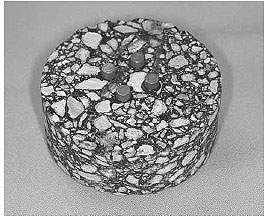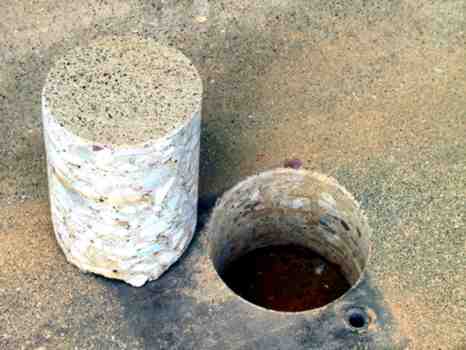Coring
All coring undertaken from asphalt cores for PRD to Concrete cores for compressive strength.

Core Testing and Sampling
Core testing and sampling involves removing a core from a reinstatement or construction for analysis. Cores are tested for the following areas of compliance:
Air voids
Testing the air voids in a core shows that NRSWA legislation is being complied with and that voids are at the correct specification.
Air voids are crucial to keep the material impervious and a bituminous material without any voids is likely to be of low stability and subject to rutting.
Air void testing also proves that materials which are designed to be porous allow water to pass through the matrix so that drainage occurs.
Concrete Care Sample Core logging
Core logging will check that the correct materials have been used in the reinstatement so that it is durable, porous and fit for purpose.
Core depth
Measuring the depth of a core is a key part of the testing. If the reinstatement is not the correct depth, it will not be stable or durable.
Core testing and sampling is the only reliable way to check the compliance of reinstatements on public highways and footways.

Method

Cores are usually cut by means of a rotary cutting tool with diamond bits.
In this manner, a cylindrical specimen is obtained usually with its ends being uneven, parallel and square and sometimes with embedded pieces of reinforcement.

The cores are visually described and photographed, giving specific attention to compaction, distribution of aggregates, presence of steel etc. the core should then be soaked in water, capped with molten sulphur to make its ends plane, parallel, at right angle and then tested in compression in a moist condition as per BS 1881: Part 4: 1970 or ASTM C 42-77.
